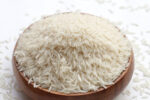How Long Rice with Seafood Lasts in the Fridge: A Complete Guide
When rice is combined with seafood, it becomes a more perishable dish due to the higher risk of spoilage associated with seafood. Proper storage of rice and seafood dishes is essential to maintain freshness and avoid foodborne illnesses. In this article, we’ll explore how long rice with seafood lasts in the fridge, the risks of improper storage, and best practices for ensuring food safety. All advice is based on guidelines from trusted government sources.
How Long Rice with Seafood Lasts in the Fridge
According to the United States Department of Agriculture (USDA), dishes that contain seafood should be refrigerated promptly and consumed within 1 to 2 days. This applies to rice dishes mixed with seafood, such as shrimp fried rice, paella, or seafood risotto. Seafood has a much shorter shelf life compared to plain cooked rice due to its higher perishability .
FoodSafety.gov, a resource compiled by agencies like the USDA and Food and Drug Administration (FDA), recommends consuming seafood-based leftovers within 2 days. Keeping seafood dishes in the fridge for longer than 2 days increases the risk of bacterial contamination and spoilage .
The Risks of Improperly Storing Rice with Seafood
Seafood, in particular, is prone to spoilage and can harbor harmful bacteria, such as Listeria monocytogenes and Vibrio species. These bacteria thrive in the warm, moist environment of cooked food if left at room temperature for too long. Additionally, Bacillus cereus, which can be found in rice, also poses a risk in improperly stored rice-based seafood dishes.
The Centers for Disease Control and Prevention (CDC) advises that both seafood and rice must be refrigerated promptly after cooking—ideally within 2 hours—to prevent bacteria from multiplying. If the rice and seafood are left out at room temperature for too long, the risk of foodborne illness increases dramatically .
Best Practices for Storing Rice with Seafood
To ensure that rice with seafood remains safe to eat, follow these essential storage guidelines:
- Cool Food Quickly: The USDA recommends cooling cooked seafood dishes as quickly as possible. Spread the rice and seafood on a shallow dish or tray to cool it to room temperature within 1 hour. Rapid cooling minimizes the time the food spends in the “danger zone” (40°F to 140°F), where bacteria grow most rapidly .
- Store in Airtight Containers: Once cooled, transfer the rice and seafood to airtight containers. Properly sealing the dish helps retain moisture and prevents contamination from bacteria or other odors in the fridge.
- Reheat Safely: When reheating rice with seafood, ensure it reaches an internal temperature of 165°F (74°C). This temperature is recommended by the USDA and CDC to kill any harmful bacteria. Reheat only the portion you plan to consume and avoid reheating more than once, as seafood is particularly sensitive to repeated heating, which can increase the risk of spoilage .
- Consume Within 1-2 Days: Seafood spoils quickly, so it’s important to consume rice and seafood dishes within 1 to 2 days of refrigeration. This ensures that the food is safe and fresh.
Freezing Rice with Seafood for Longer Storage
If you’re unable to eat rice with seafood within 1-2 days, freezing is the best option for longer-term storage. However, the texture of some seafood, such as shrimp or fish, may change slightly upon thawing.
To freeze rice with seafood:
- Allow the dish to cool completely before freezing.
- Divide the rice and seafood into portion-sized airtight containers or freezer bags.
- Label and date the containers, as seafood-based dishes can be stored in the freezer for up to 3 months without a significant loss in quality.
- Reheat directly from frozen by microwaving or steaming until the dish reaches an internal temperature of 165°F.
Signs That Rice with Seafood Has Spoiled
Seafood spoils more quickly than other proteins, so it’s important to recognize when a rice and seafood dish has gone bad. Here are some common signs of spoilage:
- Unpleasant Odor: Spoiled seafood emits a strong, sour, or fishy smell. If your rice and seafood dish has an off odor, discard it immediately.
- Slimy Texture: If the seafood or rice develops a slimy or sticky texture, it indicates bacterial growth, and the dish should be thrown away.
- Visible Mold: Mold or discoloration is a sure sign that the dish has spoiled and should not be consumed.
According to the CDC, consuming spoiled seafood can cause foodborne illnesses, leading to symptoms such as nausea, vomiting, diarrhea, and stomach cramps. These symptoms can appear within 6 to 24 hours after consuming contaminated food .
Nutritional Considerations for Properly Stored Rice with Seafood
When properly stored, rice with seafood retains its nutritional value, offering a balanced combination of carbohydrates, protein, and healthy fats:
- Protein: Seafood is a rich source of lean protein, which is essential for muscle repair and overall health.
- Omega-3 Fatty Acids: Fatty fish such as salmon and mackerel provide omega-3 fatty acids, which support heart health and reduce inflammation.
- Carbohydrates: Rice is a good source of carbohydrates, providing energy and satiety.
By following proper storage practices, you can ensure that rice and seafood dishes retain their flavor, texture, and nutritional benefits while staying safe to eat.
Conclusion
Rice with seafood can be safely stored in the refrigerator for 1 to 2 days, as seafood is highly perishable and prone to bacterial contamination. After this period, the risk of foodborne illness increases, and the dish should be discarded. To avoid spoilage, rice and seafood should be cooled quickly, stored in airtight containers, and reheated to 165°F. If you want to store the dish for a longer period, freezing it for up to 3 months is a safe option. By following these best practices, you can enjoy rice with seafood while minimizing the risk of foodborne illness.
References:
- USDA. Leftovers and Food Safety. Available at: https://www.fsis.usda.gov
- FoodSafety.gov. Leftover Foods and Food Safety. Available at: https://www.foodsafety.gov
- CDC. Bacillus cereus and Food Poisoning. Available at: https://www.cdc.gov
- CDC. Safe Food Handling. Available at: https://www.cdc.gov/foodsafety





